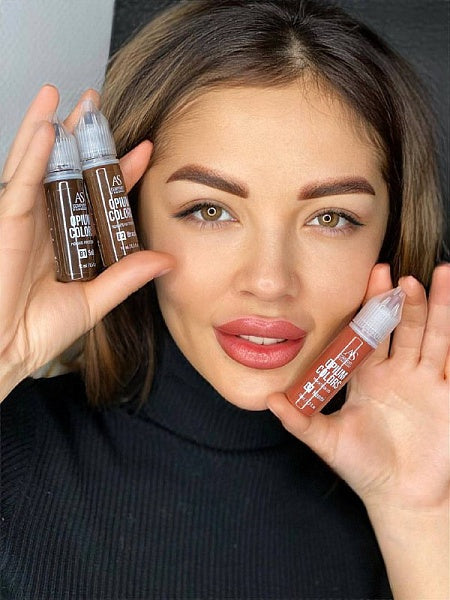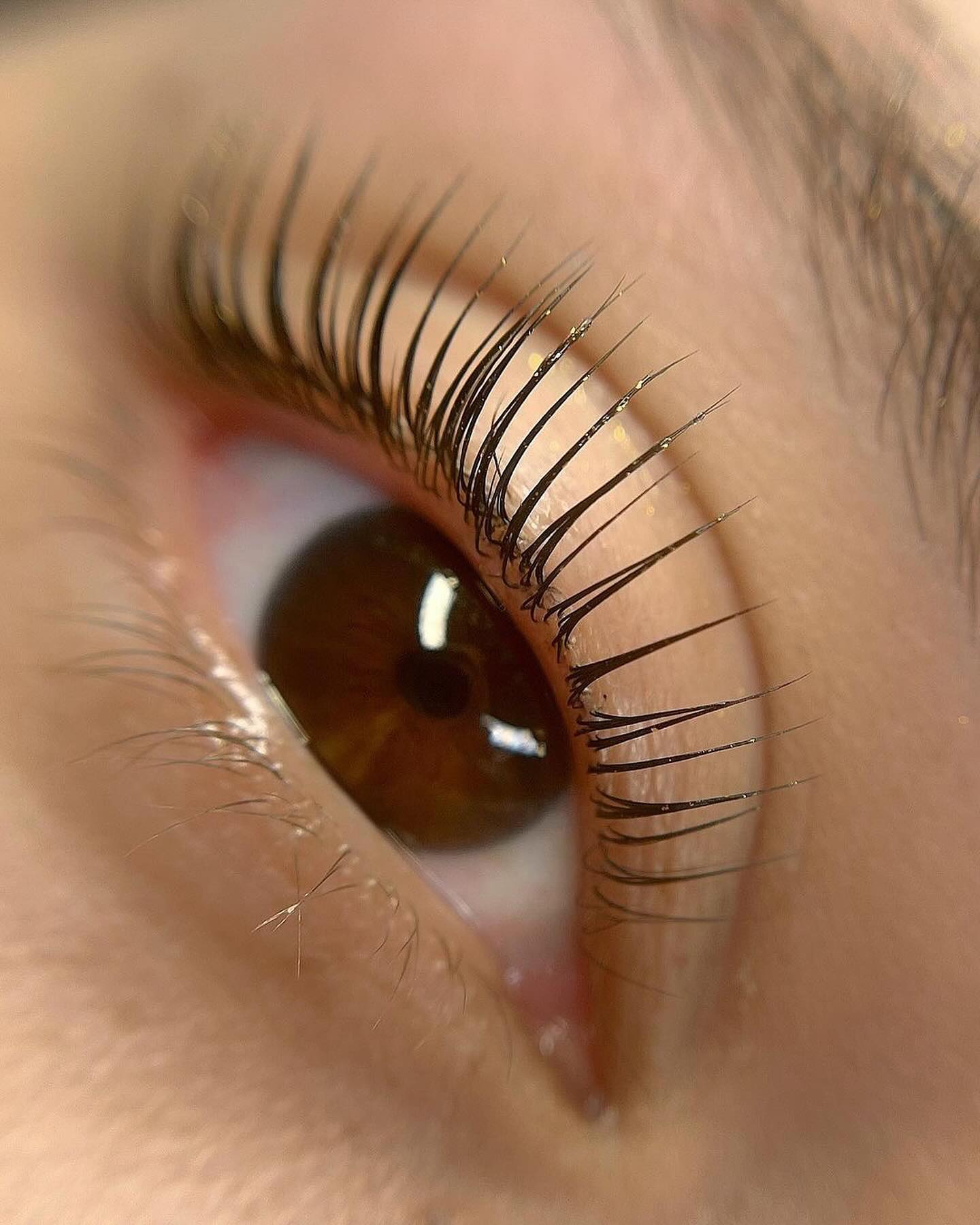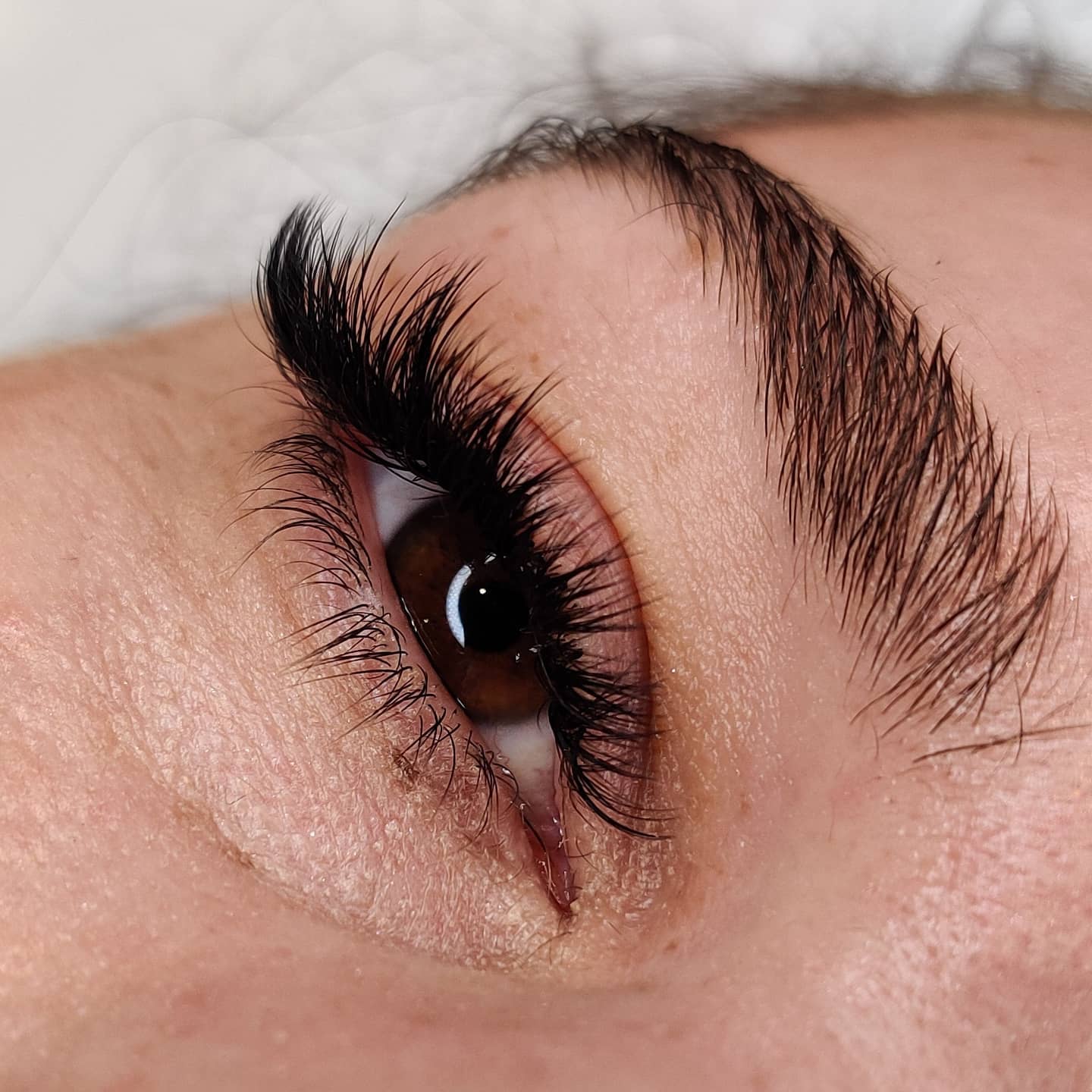Article: Why Do SPMU Pigments Turn Gray? And How To Prevent It! Let Me Explain!

Why Do SPMU Pigments Turn Gray? And How To Prevent It! Let Me Explain!
If you’ve ever had semi-permanent makeup (SPMU) done or are a practitioner yourself, you may have come across the dreaded pigment shift—when beautiful brows, lips, or eyeliner start turning an unnatural shade of gray, blue, or even orange.
I see this happen all too often, and I want to help you avoid it!
Why does this happen? And more importantly, how can we avoid it? Let’s break it down so you can make the best choices for your work or your own beauty treatments.
1. The Type of Pigment Used Matters—A Lot!
One of the biggest culprits behind color shifts in SPMU is the type of pigment used. Many practitioners use organic pigments because they appear more vibrant and last longer. However, here’s the catch—organic pigments are almost guaranteed to change color over time.
Why? Because organic pigments have larger molecules that don’t fade away as naturally as mineral pigments. Instead of gradually softening and lightening, they undergo chemical changes that can leave you with brows that have turned ashy, lips that have gone an unnatural shade of purple, or eyeliner that now looks like an old blue tattoo. While durability may sound like a plus, the color shift is definitely not worth it!
That’s why I always recommend mineral pigments as a much better option instead. These pigments fade gradually and naturally, meaning they’re far less likely to shift into an unnatural shade. Instead of turning gray or blue, they simply lighten over time, making touch-ups easier and more predictable.
Another huge issue? Lasering organic pigments. When you attempt to remove organic-based pigments with a laser, they often turn an ugly shade of gray or even black due to the way the pigment particles react under the skin. The worst part? This grayish cast can take years to fade, making correction work an absolute nightmare—especially for lips or incorrectly placed brows.
Mineral pigments, on the other hand, respond far better to laser removal. They break down into lighter tones, making them much easier to either fully remove or correct with a fresh application.
2. The Depth of the Tattoo—Too Deep = Too Dark
Another reason pigments turn gray (or just look bad) is how deep they’re implanted into the skin. SPMU is not the same as a body tattoo! When pigments are placed too deeply, they heal much darker, often taking on an unnatural, inky appearance. Over time, each additional touch-up only worsens this effect, layering pigment over pigment until brows look saturated and lifeless.
The key to a beautiful, natural fade? A light hand.
When I work, I barely graze the skin, allowing the pigment to settle in the upper dermal layers where it can fade beautifully. If you’re a practitioner, practice on oranges, bananas, latex, or even pig skin until you perfect your touch. Precision is everything in SPMU!
And if you’re a client? Choose your artist wisely. Cheap treatments often mean heavy-handed applications that look fine at first but heal into an unflattering mess. As the saying goes—pay peanuts, get monkeys.
3. Pure Black Pigments? A Recipe for Disaster
One of the biggest mistakes I see people make in SPMU is using pure black pigment, especially for brows or eyeliner. While black might seem like the obvious choice, it always fades to blue or gray over time. That’s just how black pigment behaves as it breaks down in the skin.
A much better option? Use brown-black or black-brown pigments and mix in a few drops of orange. Why orange? Because it counteracts the cool, blue undertones in black, ensuring that as the pigment fades, it remains warm and natural instead of shifting to an unflattering blue-gray hue. This is especially important for eyeliner work, where black turning blue is a common and frustrating issue.
Why Touch-Ups Matter—And Why You Should Never Go Cheap on Them
Getting your SPMU done right is only half the battle. Touch-ups are just as important! Even the most beautifully done work can be ruined by a bad touch-up. Going cheap on follow-up treatments can lead to oversaturation, uneven fading, or botched color corrections that cost far more in time and money to fix.
A skilled practitioner will know exactly how to refresh your color while maintaining the integrity of the original work. One bad touch-up can undo everything. Don’t risk it!
SPMU Is Actually One of the Most Affordable Beauty Treatments
Think about it—if your initial treatment costs around $500, and a yearly touch-up is roughly half of that, your total cost per year is about $40 per month (or even less in some cases). Compared to other beauty treatments like lash extensions, brow lamination, or even high-end skincare, SPMU is one of the most cost-effective procedures out there.
And when it’s done right, the convenience is unbeatable. Perfect brows, lips, and liner 24/7? That’s worth every penny.
Final Thoughts—Choose Wisely, Work Light, and Stay Educated
Whether you’re a practitioner or a client, knowledge is your best tool. Choosing the right pigments, working with a light hand, and investing in quality touch-ups are all key to beautiful, long-lasting results. And remember—pay peanuts, get monkeys!
When it comes to your face, don’t cut corners. The right artist and the right technique make all the difference between stunning, natural beauty and an expensive, time-consuming correction job down the line.
Got questions about SPMU? Drop them in the comments—I’d love to chat with you!
✨ Want to stay ahead in the world of SPMU? ✨
🔸 Subscribe to our newsletter for expert tips, exclusive deals, and the latest trends in semi-permanent makeup products.
🔸 Check out our B2B webshop for top-tier beauty supplies from the best brands in the industry—only the highest quality for professionals like you!
🔸 Follow us on Instagram & TikTok for behind-the-scenes content, tutorials, and inspiration. Let’s grow together!
👉 Subscribe And Shop Now: www.soingepro.com Follow Us: @soignepro



Leave a comment
This site is protected by hCaptcha and the hCaptcha Privacy Policy and Terms of Service apply.